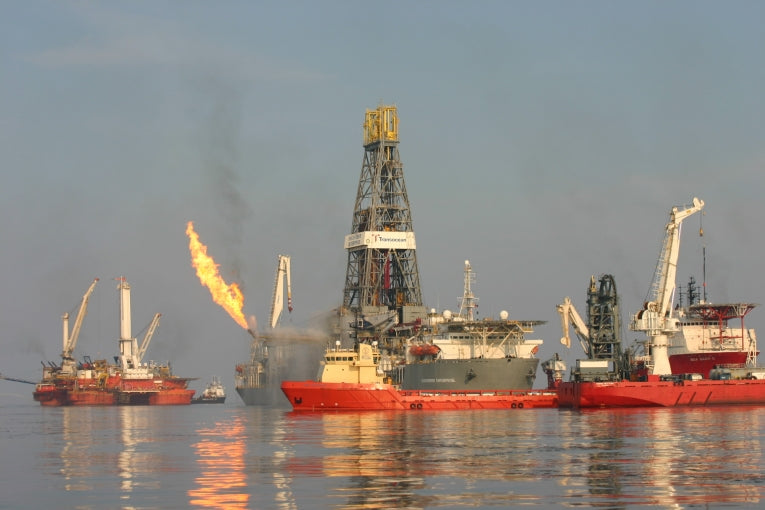In 2001 an offshore drilling structure was made by the Korean manufacturer Hyundai Heavy Industries for the company Transocean. Several years later BP took over the lease for the platform. The rig is known as the Deepwater Horizon and in April 2010 it was the site of one of the world's most damaging oil spills ever.
It started with an explosion that killed 11 men, injured 17 more, and resulted in a leak that killed uncountable numbers of flora and fauna.
The incredible quantities of thick, toxic oil were not the only threat. The leak spewed large volumes of gases and other dissolved chemicals. There were concerns that these additional pollutants would cause as many problems as the oil itself. Some of the gases included methane, a potent greenhouse gas, and benzene a toxic carcinogen, yet when measurements were taken in mid- and late-2010 there were signs that these gases were ´disappearing'. Of course they weren't actually vanishing, but it was evident that the gases were being broken down rather than released from the ocean.
A study published in January 2010 was met with some scepticism when it explained the phenomenon as the action of bacterial blooms consuming the hydrocarbons, but the team responsible have backed their results with an additional study.
David Valentine, of UC Santa Barbara, and colleagues have looked into the geographical factors that help to explain the extraordinary effectiveness of the bacteria. They discovered that the bay shape helped to promote the blooms. The deep-sea currents of the Gulf of Mexico move almost as though they are contained, leading to rapid expansion of bacterial populations where the source of nutrition is plentiful. Large mature populations of bacteria were repeatedly coming into contact with the leaking gases and flourishing in that environment.
The model developed as part of the study will help researchers to understand the impact of methane release in our oceans. Natural releases of gas from pockets under the ocean floor are commonplace and it is comforting to know that, to some extent, natural balances will come into play and reduce the risk of climate change.

A view of the oil source as seen during an overflight on May 20, 2010; Credit: NOAA
In related news, NOAA (National Oceanic Atmospheric Administration - part of the United States Department of Commerce) has released a report that confirms the previous estimations of the quantity of gas and oil released as part of the disaster. The previous estimate of a little less than 60,000 barrels of liquid oil per day has been checked using chemical analysis of samples taken last summer. The assessment and estimation has been controversial in the past with figures from different sources varying wildly, but it is hoped that this review will give confidence in the official numbers.










